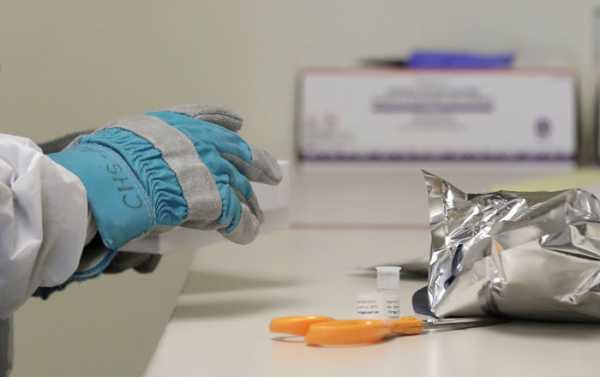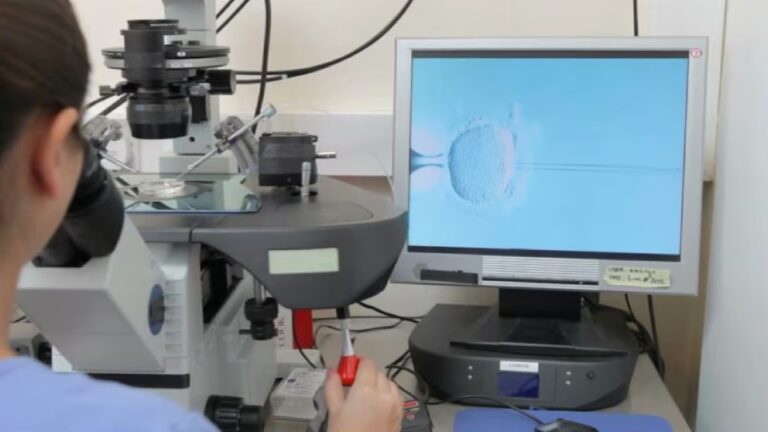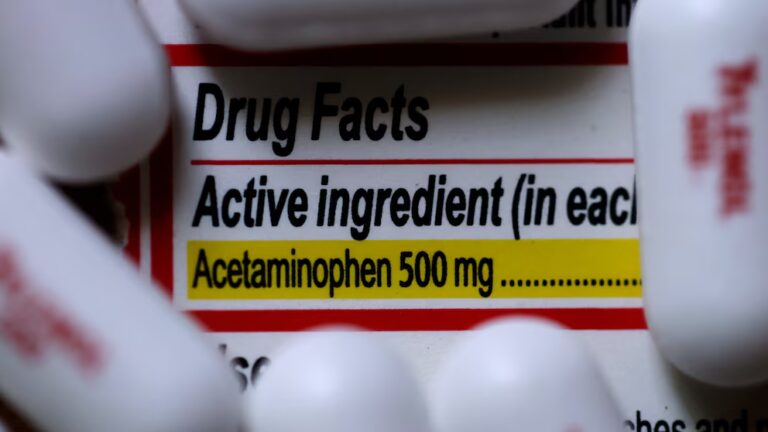
As the COVID-19 pandemic continues to spread unabated, scientific and research centres have been working at breakneck speed to come up with a vaccine against the respiratory disease, with some having already launched clinical trials.
The first cases of infection with the new SARS-CoV-2 coronavirus, which has since spread globally and infected 3,057,957 people according to the Johns Hopkins University, were detected in December 2019 in China’s city of Wuhan.
Within a month, Chinese scientists working with data collected from the Chinese Center for Disease Control and Prevention (China CDC) had rated the transmission effectiveness of the novel respiratory disease (offering an average of how many people a single person can infect with a virus) – from 1.4 to four.

An aerial view shows the P4 laboratory (C) at the Wuhan Institute of Virology in Wuhan in China’s central Hubei province on 17 April 2020. – The P4 epidemiological laboratory was built in co-operation with French bio-industrial firm Institut Merieux and the Chinese Academy of Sciences. The facility is among a handful of labs around the world cleared to handle Class 4 pathogens (P4) – dangerous viruses that pose a high risk of person-to-person transmission
If the R0 is less than 1, an outbreak dies; if the average is greater than one, it spreads.
Highly infectious viruses, such as measles, have a rating of 10 -20. The 2003 SARS outbreak had an R0 of around 3.
Currently, there is evidence that this figure is higher for COVID-19 – about 5.7. According to the World Health Organization, this signifies that it will be very difficult to completely stop the epidemic without a vaccine.
The latter would not only provide protection by training people’s immune systems to ward off the virus, but would be conducive towards allowing lockdowns to be lifted more safely, and the relaxing of social distancing protocols.
Under normal circumstances, a vaccine would take years to develop, while the pressures of the current pandemic have researchers hoping to achieve a breakthrough in a few months.
Some suggest a vaccine is likely to become available by mid-2021.

Vaccine testing
As research groups designed potential vaccines, there are a great many hurdles to overcome to ensure, first and foremost, that a vaccine is safe.
Clinical trials will also need to show the vaccine provokes an immune response which would protect people from getting sick
Even once a successful vaccine is found, there will be the challenges of getting it approved by medical regulators, and the struggle to subsequently develop enough of it and logistics of inoculating people on a global scale.
How does a vaccine work?
For decades, the principle behind vaccination has been to use the original virus, when a vaccine introduces a weakened virus to the immune system, teaching it to recognize and fight it.
This worked for highly contagious diseases such as measles, mumps.
As the Chinese scientists were swift to provide a genetic code of the new coronavirus, Sars-CoV-2, experts have the necessary guidelines for developing a vaccine.
Human Trials
The first human trial for a vaccine was announced in March by scientists at the Kaiser Permanente research facility in Seattle, Washington, when four patients received the jab, according to the Associated Press news agency.
Skipping the animal research phase in their haste, the experts cautioned that it might take months to know if the vaccine will be effective.
Called mRNA-1273, it was developed by scientists at the National Institute of Allergy and Infectious Diseases and at the Cambridge, Mass.-based biotechnology company Moderna, Inc.
The experimental vaccine uses messenger RNA to force a human body’s cells to produce a protein found on the “spikes” on the surface of the SARS-CoV-2 virus which it uses to infect.
For the vaccine to work, the body would have to respond by producing an immune response to the virus.
On 23 April the Seattle volunteers who got shots in the first trial were reported as receiving the second shot, with Lisa Jackson, who is leading the study, saying:
“The trial hasn’t been stopped. We know from the study protocol that if adverse events had happened, the protocol would have required that… Therefore we presume those things haven’t happened.”
Europe Gets Into Gear
The first human trial in Europe is underway involving over 800 volunteers, with two having been injected already with the vaccine developed in under three months by a team at Oxford University.
China’s Clinical Trials
According to state-run Xinhua news agency, an inactivated vaccine developed by Wuhan Institute of Biological Products under the China National Pharmaceutical Group, Sinopharm, and the Wuhan Institute of Virology (WIV) has entered clinical trials.
In the first phase trial, some 96 volunteers were injected starting 23 April in Jiaozuo, Henan Province, with Sinopharm cited as acknowledging the vaccine candidate was demonstrating good safety profile, with participants under observation.
It is expected that the safety and efficacy study might require a full year to complete.
Earlier this month, China-based Sinovac Biotech also received approval for clinical trials of an SARS-CoV-2 vaccine candidate, which the company had started developing at the end of January this year.
Russia’s Vaccine Effort
Russian scientists launched work on developing a COVID-19 vaccine last month, after researchers from the Smorodintsev Research Institute of Influenza, a leading medical institute in St. Petersburg partnered with the World Health Organization, successfully sequenced the virus’s whole genome on 19 March.
Acting Director of the Institute, Doctor of Medical Sciences Dmitry Lioznov, stressed that because COVID-19 is “a new coronavirus for us…it is critically important to be able to determine the path of its entry and spread into our country, as well as its mutations.”

A scientist works in the lab of Linqi Zhang on research into novel coronavirus disease (COVID-19) antibodies for possible use in a drug at Tsinghua University’s Research Center for Public Health in Beijing, China, March 30, 2020
Meanwhile, Rinat Maksyutov, head of the Vektor State Virology and Biotechnology Center, announced during a video-link meeting between Russian President Vladimir Putin and the heads of top research center. that his facility had proposed first-phase clinical trials of three vaccines from 29 June on 180 volunteers.
Maksyutov acknowledged that scientists at a lab complex located in Koltsovo outside the Siberian city of Novosibirsk had developed several prototype vaccines, with tests currently underway on mice, rabbits and other animals to determine the most promising by 30 April.
Vektor planned pre-clinical studies by 22 June ahead of launching testing in humans, added Maksyutov.
Sourse: sputniknews.com






